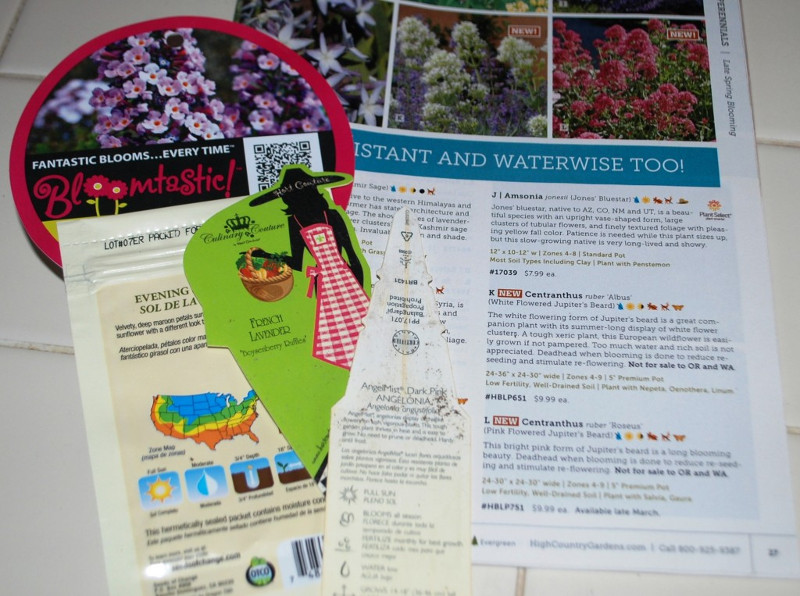Plant tags provide information about a plant's requirements for sunlight, water, fertilizer, and temperature along with other useful guidelines for growing the plant. One of the trickiest parts of reading the label is understanding the watering recommendations. The tags often use watering symbols that do not come with a key or explanation. So we put together this guide to help gardeners understand the symbols.

Catalogs, seed packets and plant labels use a variety of methods to give gardeners clues about a plant’s water needs.
Most water requirements are represented by a water droplet symbol that’s empty, partially filled or completely filled. Here are some of the clues to look for on labels:
Empty drop: A plant that requires only rainwater or no supplemental watering once established. So be sure to give a new or transplanted tree or bush extra water until it appears healthy. This can be up to a year for trees and some bushes. After that, there’s no need to irrigate the low-water plant at all.
Half-filled drop: This is a medium-water plant. It will always need some supplemental water, depending on what Mother Nature delivers. Most medium-water plants need supplemental water once or twice a month during the hottest days of summer.
Full drop: These plants are not for water-wise gardening and will require watering at least once per week unless you get enough rain.
There are additional variations on these labels, like partially filled drops. I’ve also seen use of watering pails as symbols. Most add text alongside the icons, but if in doubt, ask for help from the nursery staff or a local master gardener.

No matter what the label shows, circumstances can affect water needs, so don’t take your water icon at face value! Aside from plant establishment, wind and unexpected heat waves can dry plants out. Summer monsoons can nearly drown a drought-resistant plant. And welling and mulching around plants helps them retain water, maybe helping you push a half-filled drop to a quarter-filled one.
 |
Author Teresa Odle - Published 12-10-2020 |
